#Antietam
Text
Battle of Harpers Ferry- Confederates overtook Maryland Heights September 13, 1862

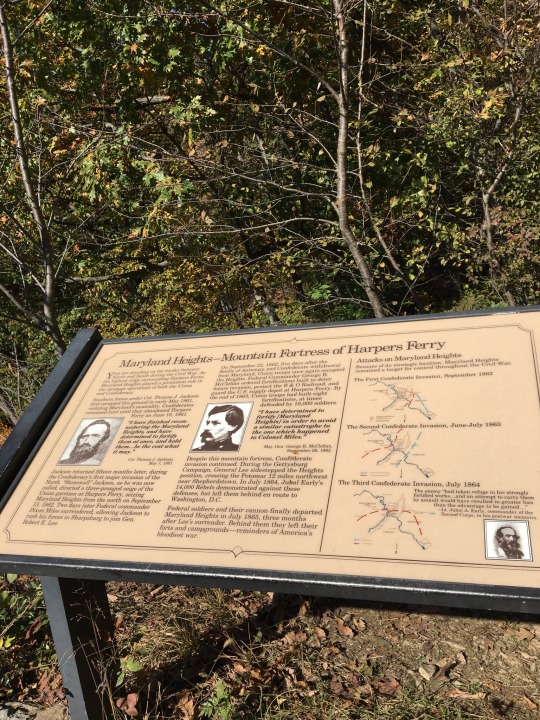
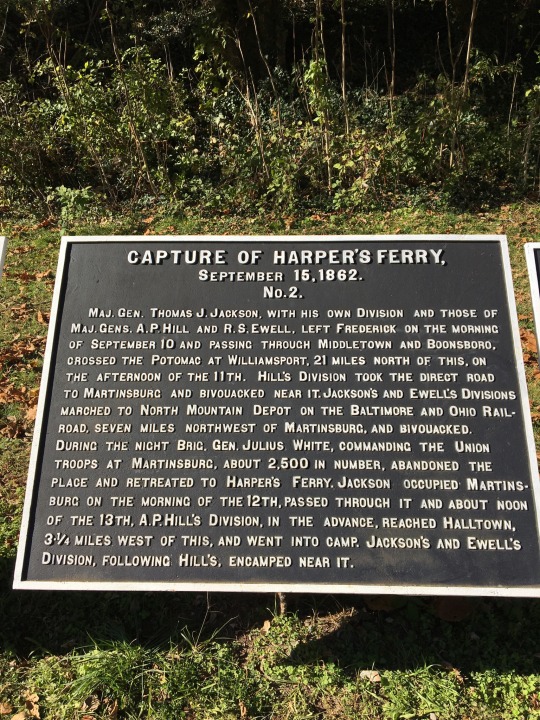
#harpers ferry#southerners#civil war#union#states rights#confederate#history#robert e lee#stonewall jackson#virginia#gravestones#confederacy#september#antietam#potomac river#alabama#georgia#virginia military institute#maryland
24 notes
·
View notes
Text

Mumma Graveyard. Antietam National Battleground
Photography by David Velez
#davidvelez #david6of7 #photo #originalcontent #antietam #civilwar #historic #antietamnationalbattleground #mumma #graveyard #cemetery #mummagraveyard
#Mumma Graveyard. Antietam National Battleground#Photography by David Velez#davidvelez#david6of7#photo#originalcontent#antietam#civilwar#historic#antietamnationalbattleground#mumma#graveyard#cemetery#mummagraveyard
10 notes
·
View notes
Text

Watch tower at Antietam Battlefield
oooklathemok
3 notes
·
View notes
Text

1862. President Abraham Lincoln, Allan Pinkerton (left), and Maj. Gen. John A. McClernand (right) at Antietam, Maryland.
Original photograph by Alexander Gardner. Colorized by Sanna Dullaway.

#historical photos#photography#vintage photography#colorized#1862#abraham lincoln#allan pinkerton#john a mcclernand#antietam
8 notes
·
View notes
Text
The World Changed 161 Years Ago Today
The Civil War defined us as what we are and it opened us to being what we became good and bad things. It was the crossroads of our being, and it was a hell of a crossroads. - Shelby Foote
Less than a week ago, the world remembered the twenty-second anniversary of 9/11 and no matter the radio station, TV program, or sporting event all took time to pause and remember and even New York City’s Fashion Week is paying tribute. It is well and good that we honor that day, the lives lost, and how it changed the world, the shock and horror of the attacks coupled with the heroism of those who rushed in where everyone was trying to run out plus those who fought back over Pennsylvania. Today is another anniversary in American history. This is a day that changed the country forever and cost more lives than 9/11, yet it is unlikely anyone will see one news story about it, no sporting events will take a moment for reflection, and certainly, no fashion show will remember it. One hundred and sixty-one years ago in the countryside of Maryland outside of the small village
of Sharpsburg along the banks of Antietam Creek, 113,000 men fought a battle that changed the United States forever.
The battle started shortly before 5:30 a.m. on the right-hand side of the Union battle line when Northern soldiers advanced on Southern positions believed to be just beyond a fully grown cornfield near a small white church. This church was the gathering place of a German-American pacifist denomination, called the “Dunkards” by locals, as the congregation would submerge or “dunk” new members in Antietam Creek. The church looks more like a schoolhouse as this sect believed a steeple immodest. As the Union soldiers advanced towards the cornfield, officers noticed the shiny glint of bayonets among the corn stalks, and the epic struggle began. The fighting seesawed back and forth with each side charging, taking positions, and then being forced back when the other side countercharged. By 10 that morning little territory had changed hands but the armies on both sides in this area were spent and this section of the battlefield grew quiet. While this part of the battle lasted just four and a half hours, over 13,000 were casualties. A soldier after the battle said the corn stalks were cut down with bullets and shells so close to the ground that one could not have done it better with the sharpest of knives.


The sketch is from Battles and Leaders of the Civil War 1887, p. 687, and the cornfield as it is today from the New York Monument. ©CWTK
As the roar of war died down to their right, the Union soldiers positioned near the center of the battle line prepared to enter the fray. The area where this fighting occurred is compact in size, roughly eight soccer pitches in size. Here the Confederate troops had taken a position along an age-old wagon road that years of rain and use wore away the earth causing the road to be five feet below ground level. This “sunken road” offered ideal concealment and the Union troops attacked in wave after wave. Each attack melted away as snow does when it falls on the warm ground. Eventually, remnants of the famed Union Irish Brigade who were trapped on the battlefield by this murderous position found a way to bring their guns to bear on the sunken road creating such carnage this section of the battlefield is now called Bloody Lane. One of the many ironies of the Civil War is that the Northern troops who fought here were primarily of Irish background and the Southerners in the Bloody Lane were Irish as well. The Union forces were able to finally capture the sunken road but like before, they were not able to hold the positions gained. By 1 pm this area of the battle had grown calm and both sides were back in the positions they were in when the fighting started. Causalities now numbered over 19,000.

The Sunken Road ©CWTK
While the battle for Bloody Lane was concluding, on the far left, Union General Ambrose Burnside (best known for his unique facial hair that created a fashion trend that is still with us today, sideburns) set about forcing the Confederate forces facing him to retreat. Although Burnside had a great numerical superiority in men 12,500 to 3,500, the defenders were located on a hilltop with Antietam Creek between them and Burnside’s men. The creek was deep and the only way the Union troops could cross was on a stone bridge just over twelve feet wide. Even though they knew what they were facing, the Union men formed their lines, marched to, and attempted to cross the bridge while shot and shell rained down from the hill. For three long and horrific hours, the Union tried and retried crossing the stone bridge with each attempt failing. Finally, enterprising soldiers discovered a shallow section of the Antietam downstream shielded from view allowing them to wade across and finally capture the hill. This success was short-lived as Southern reinforcements arrived and pushed the nearly victorious soldiers of Burnside’s command back to near where their day started.

The stone (Burnside) bridge over Antietam Creek ©CWTK
It is now just after 5:30 pm and the battle has essentially ended. After nearly twelve hours of bloodshed, the battle has left 3,650 dead, 17,300 wounded and 1,770 missing for a total of 22,720 casualties. Twenty percent of the men that went into battle that day were wounded or dead. The story does not end here for those unlucky souls who were wounded as modern medicine of that time required the amputation of limbs when an arm or leg was struck by a bullet. The ammunition used at the time was made from soft lead, unlike the modern steel jacketed rounds that ‘clip’ bone possibly allowing leg/arm wounds to heal, the soft lead destroyed bone and tissue leaving the surgeons no choice but to amputate. Those who received wounds to their arms or legs were far luckier than those who received a wound to their core. That same soft lead that would destroy bones would severely damage internal organs and the doctors did not yet have the knowledge or tools to repair such trauma. Soldiers at the time called it being “gut shot” and knew it was a death sentence (often a painful and very slow process that could take days to weeks). This is why if you see photographs of the Civil War dead, it will often look as though someone has rummaged through the dead soldiers' clothing in search of valuables. This was the wounded men themselves ripping away their clothing frantically looking and hoping the wound they received would not mean death. Since even state-of-the-art medical care then was crude and unsterile, twenty-two percent of those wounded later died of their wounds. When the dead on the field of battle are combined with those soldiers whose battle for life ended at a hospital, this day cost 7,456 lives.
This battle produced three significant impacts that touch every American even today.
First, the American Civil War occurred as the art of photography was developing. Alexander Gardner, a Scottish immigrant, became well known as well as connected because he managed famed photographer Matthew Brady’s Washington DC gallery (In fact many of Gardner’s Civil War photographs were originally credited to Brady). Through his connections, Gardner became the staff photographer for the Union Army that fought at Antietam. While the cameras of this era did not have fast enough shutters to capture ‘action’ photographs, Gardner’s proximity and the wagon he converted into a traveling darkroom allowed him to record the first photographs of the war that the public had ever seen. Until these photographs were exhibited, the only images of war seen by the lion’s share of people were products of artists’ imaginations which often glorified combat. Starting with Antietam, images of war would no longer be from imaginations but would be told through the lenses of photojournalists.
Here are some of Gardner’s images from Antietam including the iconic photo of Bloody Lane. He was able to gain access to the battlefield on September 19, 1862, two days after the battle.
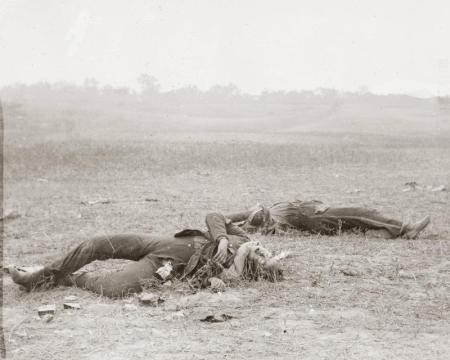
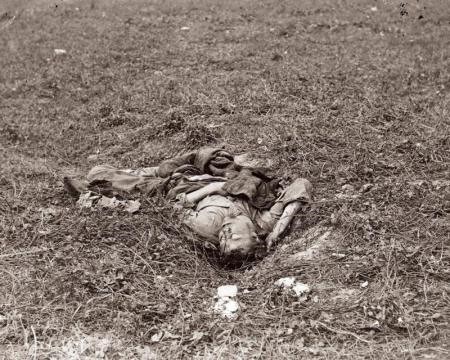


Below is Alexander Gardner’s famous “Bloody Lane” photograph:
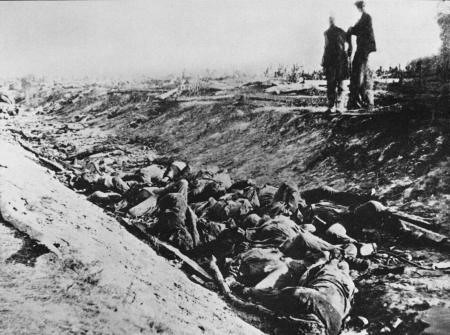
Another outcome of this battle was the Union victory at Antietam kept the world's superpowers, England and France, from involving themselves in the conflict. A quick history lesson for those who do not know, the United States was not a superpower in 1862. Until this point in the war, all the major battles fought in the Eastern Theater, roughly meaning near Washington DC, (Antietam is less than an hour and 1/2 drive from Capitol Hill even with notorious D.C. traffic) had resulted in Confederate victories. These repeated victories caused the governments of England and France to consider recognizing the Confederacy as an independent country, just as France had done for the Colonies during the American Revolution. France and England were considering this action primarily to get their massive textile factories producing again and bring large numbers of their citizens back to work. The South’s cotton was the raw material that fed huge mills and the Union blockade as well as the South’s decision to drastically limit exports had cut this flow of raw material off. Because of a lack of cotton, these massive mills were shuttered leaving thousands of their employees out of work. In England alone, job losses were around 60% in the textile industry, leaving approximately 295,000 unemployed and the majority of the unemployed being in Lancashire. There was no unemployment insurance at the time and the politicians had a large number of their constituents needing to return to work simply to feed their families. However, the resolve of the Union to repel this invasion led to England and France withholding recognition. Without foreign assistance, the Confederacy would struggle to acquire the provisions needed to wage war as well as develop and grow an economy. The failure to secure diplomatic status as an independent country was a death blow to hopes for the Confederacy.
Most Americans today when asked what caused the Civil War, will answer slavery and with most momentous events, simple one-word answers sound great but there is much more to the rest of the story. Slavery was the root cause and always an emotional undercurrent to the conflict however, if you asked the average Southerner what they were fighting for they would share that they were fighting for states’ rights, and in the North, the majority of the public felt they fought to preserve the Union. This view can be seen in President Lincoln’s open letter to newspaper editor Horace Greeley who had attacked him for not ending slavery:
My paramount object in this struggle is to save the Union, and is not either to save or to destroy slavery. If I could save the Union without freeing any slave I would do it, and if I could save it by freeing all the slaves I would do it; and if I could save it by freeing some and leaving others alone I would also do that. What I do about slavery, and the colored race, I do because I believe it helps to save the Union; and what I forbear, I forbear because I do not believe it would help to save the Union. I shall do less whenever I shall believe what I am doing hurts the cause, and I shall do more whenever I shall believe doing more will help the cause.
An amazing note about this letter to Greeley, Lincoln wrote it on August 22, 1862, exactly one month after he had decided to issue the Emancipation Proclamation and was waiting for the correct time to release the proclamation. The pundits of the era attacked him for this saying this letter showed a lack of commitment to the abolition of slavery. What Lincoln was doing in reality was subtlety informing the public that when he released the proclamation it was part of the plan to save the Union and preserve the coalition of Unionists and Abolitionists in Congress working together.
On July 22, 1862, Abraham Lincoln summoned his cabinet for a meeting, which was a surprise to its members. At this meeting, the President announced he had made up his mind to issue an Emancipation Proclamation and this was not up for debate. William Henry Seward, the Secretary of State and today best known for what was called Seward’s folly the purchase of Alaska from Russia offered a piece of advice by suggesting that Lincoln wait until the army had achieved a major victory because “such a proclamation ought to be borne on the bayonets of an advancing army, not dragged in the dust behind a retreating one”. Issuing the proclamation without achieving a substantial victory would give the English and French governments the impression Lincoln’s government was grasping at straws to retain power. Antietam was the victory that Abraham Lincoln needed to release the Preliminary Emancipation Proclamation. The repulse of the invasion of Maryland provided him with the victory needed. Just five days after the victory at Antietam, President Lincoln announced the Preliminary Emancipation Proclamation and that it would be formally issued on January 1, 1863.
“. . . on the first day of January . . . all persons held as slaves within any State, or designated part of a State, the people whereof shall then be in rebellion against the United States shall be then, thenceforward, and forever free.” President Abraham Lincoln, preliminary Emancipation Proclamation, September 22, 1862“
For the full document, click here.
So as we go through our normal lives today, take a second and remember the battle that changed the world for the better. Because of the Battle of Antietam, one hundred and sixty-one years ago, photography gave us images of war’s terrible price for the first time, England and France stayed at arm’s length from the American Civil War, and allowed Abraham Lincoln to transform the war from a conflict about states’ rights/preserving the Union to a struggle to end slavery.
I am naturally anti-slavery. If slavery is not wrong, nothing is wrong. - Abraham Lincoln
©CWTK2023
7 notes
·
View notes
Text

Antietam Battlefield Park II, Maryland, 2001.
14 notes
·
View notes
Text


Pictures of me and Llywelyn today at Antietam. Why yes, I did choose to wear my 'museums are not neutral' shirt specifically for this occasion... I even got a compliment on from a nice Jewish lady, first in Hebrew and then again in English.
68 notes
·
View notes
Photo
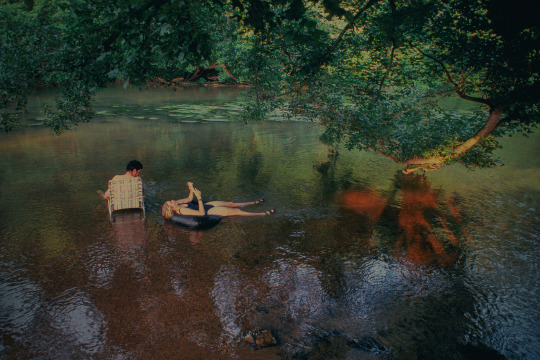
Chris and his girlfriend just before dinner. Antietam Creek always has a cool breeze. Near Burnside Bridge. Nikkormat, 28mm. Kodak Kodachrome 64. NIK
70 notes
·
View notes
Quote
Slavery, that bane of human progress, was long since abolished. The gap which separated the North from the South is almost closed. The wound which threatened the life of the nation is almost healed. The scenes of Bull Run and Antietam are almost forgotten. The cold iceberg of oppression has been melted away in the warm Gulf Stream of a Nation’s love. The world moves on forgetful of the past. Peace and prosperity meet us on every side. Then let it be the desire of every student—aye, of every citizen of this land, that this prosperity should continue on, and that the North and South may continue to stand, as they stand to-day, upon the firm basis of universal liberty and equality.
“Northern Student,” in a letter to the editor of the Princeton Press, March 1, 1873
8 notes
·
View notes
Text
A trailer for DIVIDED LOYALTIES
I thought readers might like to see the trailer for Divided Loyalties I created for the Historical Novel Society conference.
For the Historical Novel Society conference a few weeks ago, I created a video trailer about Divided Loyalties. My first novel, this Civil War novel follows a young Irish immigrant named Maureen as she figures out how she can come to the aid of her adopted country.
I thought my readers who weren’t in attendance might like to see what I created.
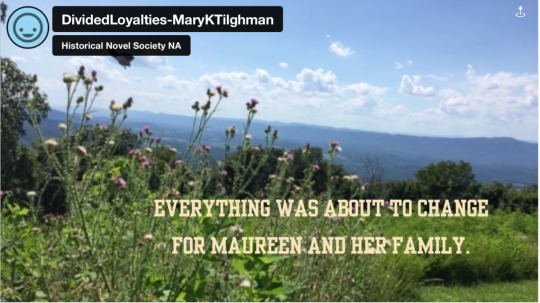
View On WordPress
5 notes
·
View notes
Text
Antietam Battlefield

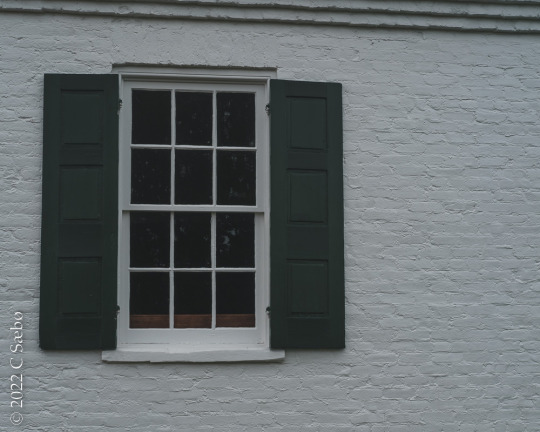



#Antietam#american civil war#Maryland#National Park#Fujifilm X-T3#XF35mmf2#Original Photography on Tumblr#Original Photographers on Tumblr
10 notes
·
View notes
Text
Lexington, VA has caved to the woke mob. Lexington has distanced itself from their heritage and VMI removed the Stonewall Jackson monument. Keep em Flying! Flag the town! VMI Cadets and Lee and Jackson have been dishonored by woke politicians. #boycottLexington

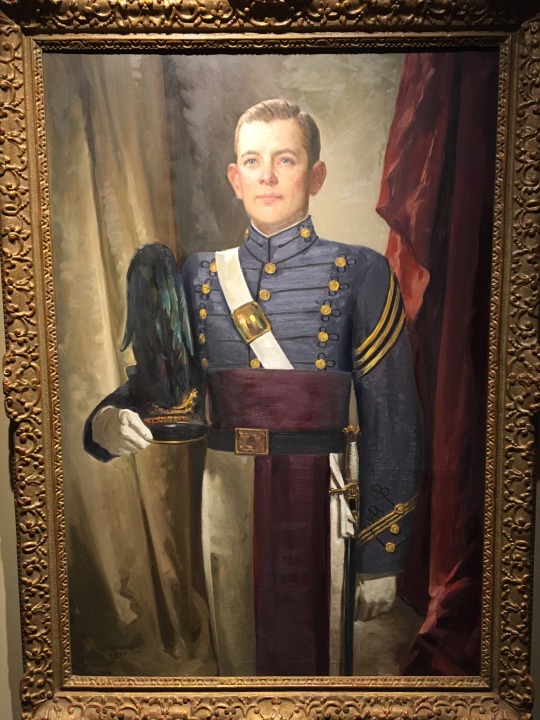
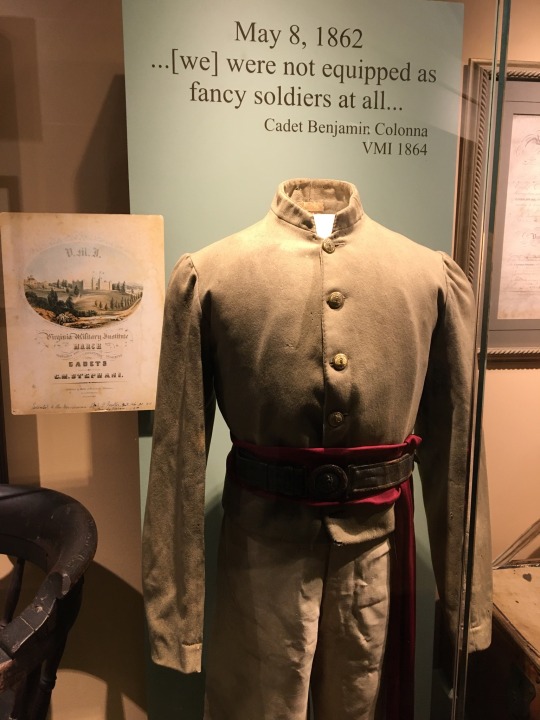


#lexington#virginia#you broke my heart#southerners#civil war#states rights#confederate#robert e lee#gravestones#confederacy#history#stonewall#stonewall jackson#jeb stuart#georgia#alabama#rebel#blacklivesmatter#antietam#humanity#black confederate#gettysburg
49 notes
·
View notes
Text

Dunker Church. Antietam National Battleground
Photography by David Velez
#davidvelez #david6of7 #photo #originalcontent #antietam #civilwar #historic #antietamnationalbattleground #church #landmark #dunkerchurch
#Dunker Church. Antietam National Battleground#Photography by David Velez#davidvelez#david6of7#photo#originalcontent#antietam#civilwar#historic#antietamnationalbattleground#church#landmark#dunkerchurch
9 notes
·
View notes
Text

Antietam Battlefield, MD
oooklathemok
3 notes
·
View notes
Text
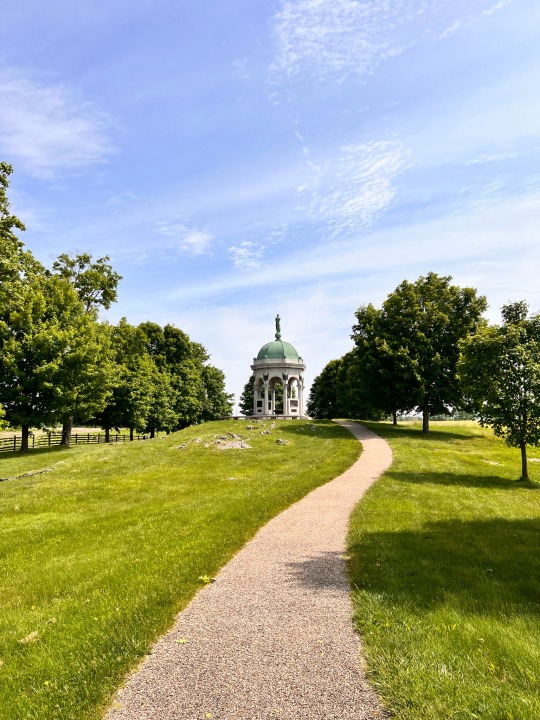






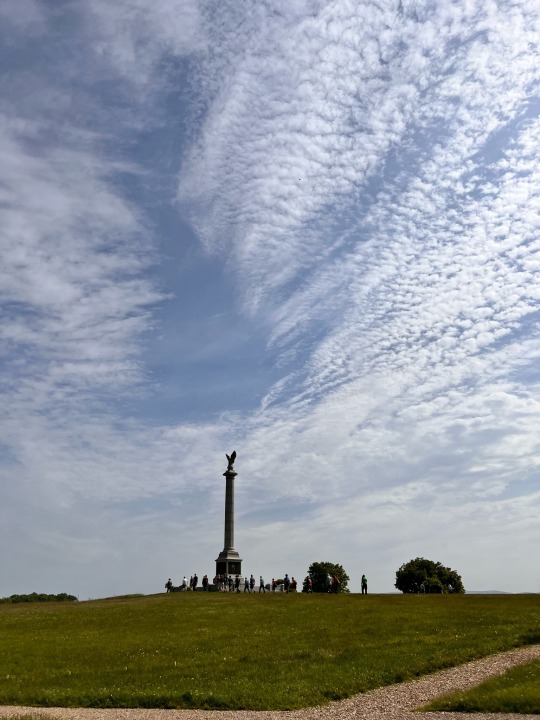
I went to Antietam National Battlefield today. Despite what happened there, it’s beautiful…and also, there were tons of bluebirds flying around. ❤️
2 notes
·
View notes
Quote
He was on plowed ground and was escaping wonderfully. I felt as though he was entitled to succeed. But the shooting went on and just before he was out of range, down he went.
Sergeant Charles Fuller, 61st New York Infantry, observing a Confederate soldier fall back from the Bloody lane, Battle of Antietam.
#battle of antietam#bloody lane#New York#Antietam#battle of sharpsburg#American Civil war#Civil war#1862#Sharpsburg#Maryland#Civil War deaths
2 notes
·
View notes